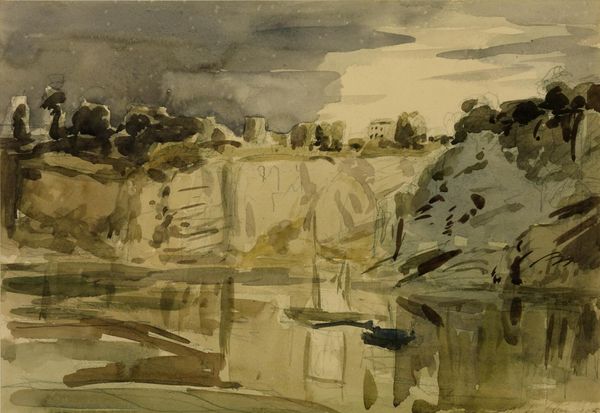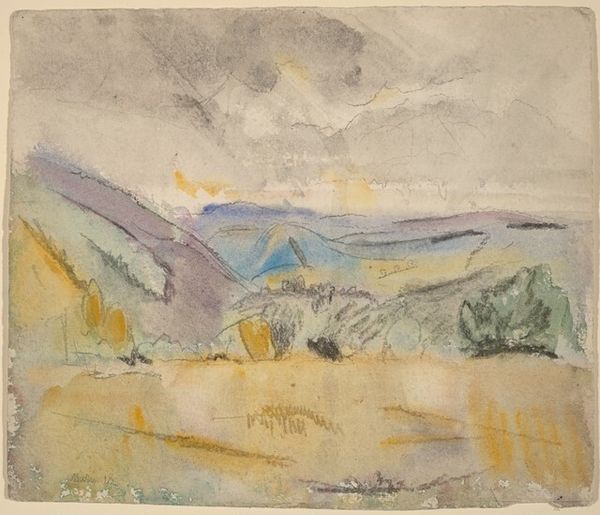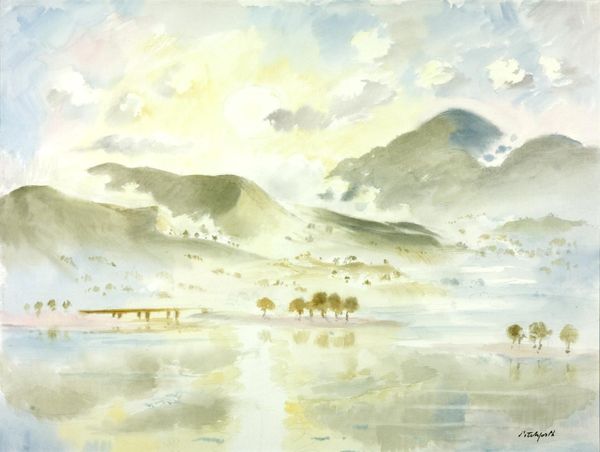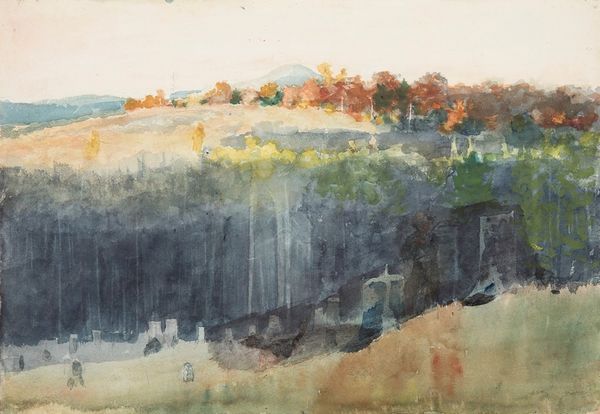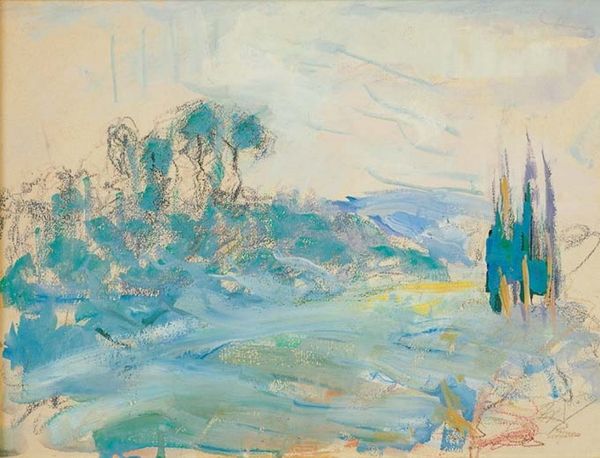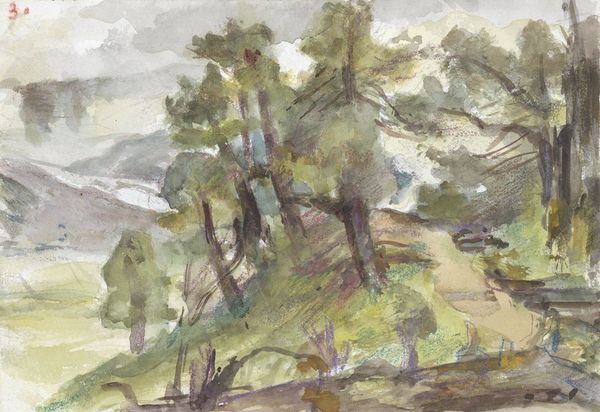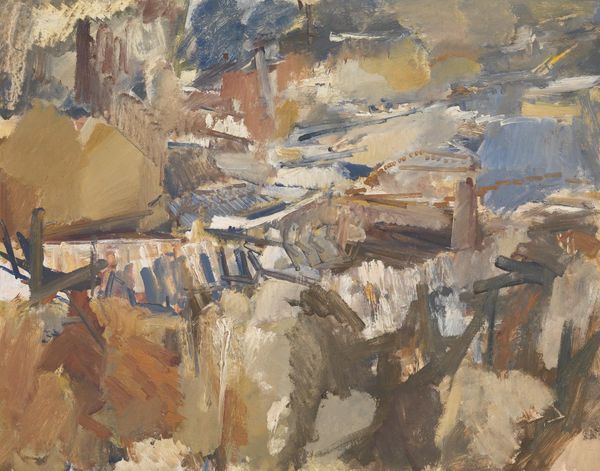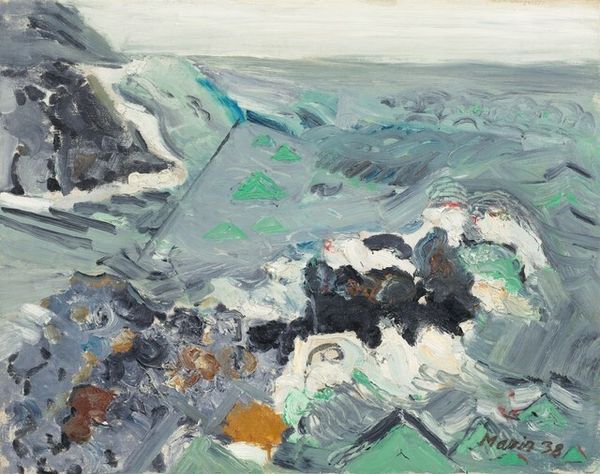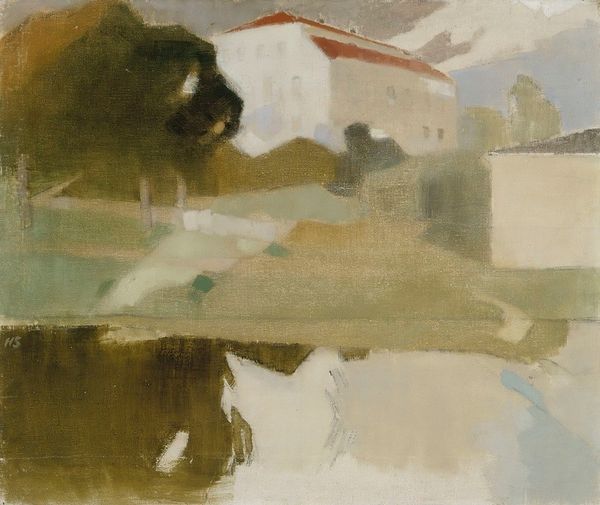
Copyright: Periklis Vyzantios,Fair Use
Curator: Well, Editor, here we have "Hydra," a watercolor and perhaps also oil painting created by Periklis Vyzantios in 1967. What’s your initial reaction to this cityscape? Editor: My first impression is quiet contemplation. The muted tones, almost monochrome in their effect, create a serene and slightly melancholic mood. I see hills as ancient protectors hovering over human habitations, but there is a definite veil that obscures things. Curator: It is evocative. Vyzantios was well known for his plein-air paintings; this work captures the materiality of Hydra through visible, flowing brushstrokes, doesn't it? Consider the application of pigment, layered and diluted, a direct consequence of its making. Editor: Yes, but those delicate layers! They resonate with something deeper. Hydra itself, the mythical serpent slain by Heracles, its many heads regenerating when severed. I wonder if the indistinct quality alludes to this persistent renewal and rebirth. It is also like an aquatic cosmos, and feels primordial. Curator: Interesting idea to read a painting of Hydra in Greece, against this mythical symbol of a hydra. While one could seek connections, let’s keep focused on how art depicts physical and social production. Vyzantios might be representing a social setting in flux, of this moment of this landscape's industry and life—its literal stuff. I am compelled by how this work, with its hazy ambiguity, forces us to think about artistic labor, or this site and its specific materials during this time period, late 1960's, against a backdrop of evolving postwar industrial processes. Editor: I suppose you may see the marks of process. Still, to me, the way the architecture dissolves into the landscape feels almost like a commentary on memory. The scene, although specific, carries an ethereal quality, representing not just a physical location, but a symbolic space—one deeply ingrained in the collective consciousness of Greek history and its myths. Curator: Perhaps that symbolism resonates, but without close examination of how the paint performs on the canvas, or how Vyzantios' artistic practices reflect contemporary concerns of labor and industrial transition, we fail to fully understand the period of this production of art. Editor: And perhaps focusing only on the mechanics obscures the very powerful emotions communicated through recurrent motifs that have captured humanity's imagination for centuries! In the end, art, whatever the process, retains cultural codes. Curator: A compelling counterpoint indeed. Thank you for your iconographic reflections, they enrich our perception. Editor: Likewise, your materialist observations highlight elements easily overlooked, to create new ways to think about history in art.
Comments
No comments
Be the first to comment and join the conversation on the ultimate creative platform.
